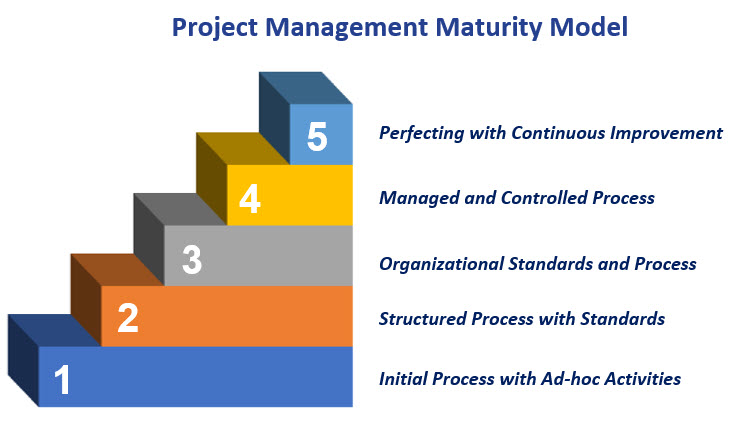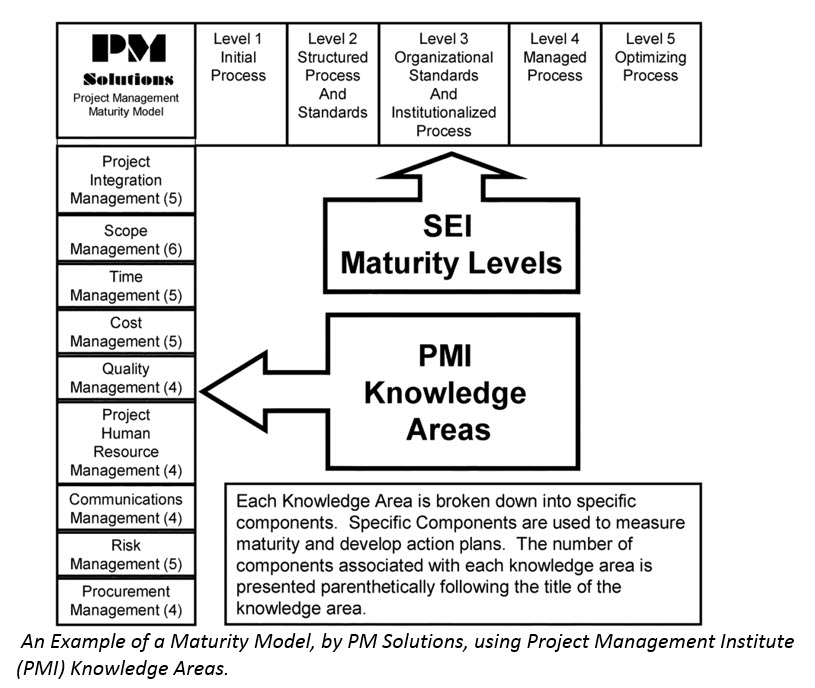How Mature Is Your PMO?

Written by Tammi Knorr:
Are you dreading your next project portfolio update to leadership? Do you see more red than green on your status dashboards? Is the organization relying on heroics rather than proven processes? Are the project teams always asking for more money and always behind schedule? Are your systems “buggy” when implemented?
If your answer to any of these questions is “yes” then you may have an “immature” project management office and should consider measuring yourselves against one of the popular project management maturity models.
Project Maturity Model
Using a project maturity model can measure your current state and give your organization a baseline for reaching maturity.
The various project management maturity models available today are very similar, and typically have five stages of progression that guide organizations on their path to better performance. The initial stages are about introducing project management methods, followed by increasing levels of adoption and standardization, leading to a fully-optimized organization.

Roadmap to Refinement
Since organizations change and standards and best practices evolve, using a model to re-evaluate your current project management processes gives a roadmap to refinement.
Efficiencies can be gained from a continual-improvement routine resulting in processes that are optimal for your organization. Think of the project management maturity model as a compass to guide your organization to higher levels of effectiveness with the different processes utilized on projects. For example, better governance of scope can lead to better schedule management and lower total cost. Better communications management can lead to better understanding among the team, the leadership, and other stakeholders of the goals and objectives of the project and is essential for mitigating organizational impacts. Introducing risk management can assist in the assessment of opportunities and threats that might derail the project or provide new profit potential.

Improve Performance
Many studies have shown that improving project management processes can improve on-time performance, reduce cost, and improve quality.
The primary benefit of achieving project management maturity is to improve your performance in the areas of schedule, budget, scope, and quality of the organization’s projects. By reaching maturity, you see more green than red on your status dashboards, your organization relies on proven processes rather than heroics, and your project teams are on schedule and budget, and systems are “cleaner” when implemented.

The first step to maturity is to measure your PMO by reviewing the current processes in place in all the aspects of project management. This is done by interviewing project managers, project team members, and others involved in projects utilizing a proprietary scoring system. The data captured during this process is then used to create a multi-dimensional view of your organization’s current state, illustrating your various strengths and weaknesses in the discipline. With this knowledge, a path forward to improved project management can be designed that will lower organizational costs, improve quality, and improve on-time performance. For more information, please see: https://www.m-inc.com/services/project-management/
Gantt Group. (n.d.). Project Management Maturity Assessments. Representative of http://www.ganttgroup.com/wp-content/uploads/2013/04/project-management-maturity.png
Pennypacker, J. S. & Grant, K. P. (2003). Project management maturity: an industry benchmark. Project Management Journal, 34(1), 4–11. Retrieved from https://www.pmi.org/learning/library/project-management-maturity-industry-benchmark-2526
Project management triangle Cost Project manager – others. Retrieved from https://www.kisspng.com/png-project-management-triangle-cost-project-manager-3097003/
 Tammi Knorr – Consultant
Tammi Knorr – Consultant
Tammi Knorr is a PMP and CSM-certified IT professional with over 25 years of experience and is currently a senior-level Business Analyst with Momentum. Tammi has led analyst, development, testing, and configuration teams in a variety of settings. She has successfully led the efforts of complex projects, diverse resource teams, and software implementations.
 Tap to email
Tap to email
